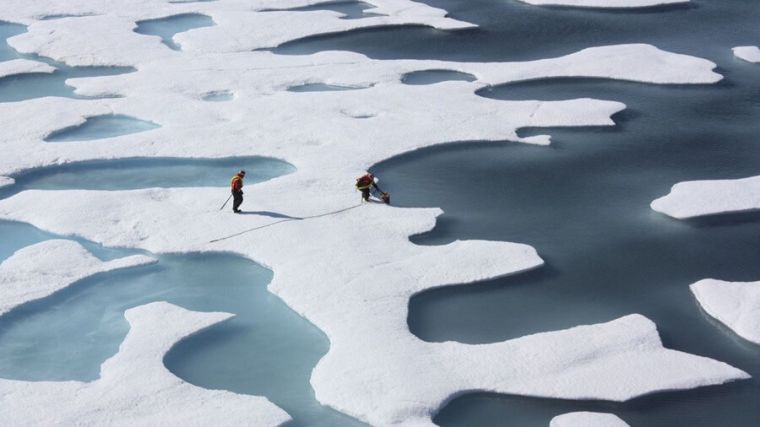Warming in Arctic happening more than twice as fast than anywhere else in world, scientists reveal

Most of us perceive the Arctic as an ice-cold region, but latest research suggests that even the northernmost part of the Earth is feeling the effects of global warming.
In its annual Arctic Report Card, the National Oceanic and Atmospheric Administration (NOAA) noted how the average air temperature over the Arctic hit 2.3 degrees Fahrenheit (1.3 degrees Celsius) this year up to the month of September—the highest since observations began in 1900.
Rick Spinrad, the chief scientific officer at the NOAA, explained that these figures only prove that the Arctic, which centres on the North Pole and covers North America and Eurasia, is already warming at an alarming rate.
"Warming is happening more than twice as fast in the Arctic than anywhere else in the world. We know this is due to climate change," Spinrad said, as quoted by ABC News.
Aside from this, the NOAA also noticed how the amount of sea ice was at its lowest even during the peak period in February. The minimum ice coverage in the Arctic was also the fourth lowest on record last September.
Kit Kovacs, a senior scientist at the Norwegian Polar Institute, explained that simply put, these figures indicate that more and more Arctic sea ice is melting every year. More than 50 percent of the Greenland ice sheet, for instance, melted dramatically this year.
As a result, the Arctic rivers were completely swollen this year, with eight of the biggest rivers releasing 10 percent more water than during the 1980s.
The melting of Arctic sea ice also has negative implications on the wildlife in the region. Walruses, for instance, have begun crowding on beaches due to less and less ice they can use for mating and giving birth.
Kovacs said female and baby walruses are already hauling out as far as 110 miles onto the land, which makes them prone to stampedes.











